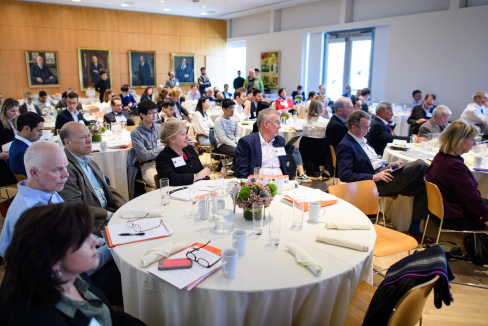Principal Investigator
At a Glance
Harnessing the power of land to store carbon is essential to meeting worldwide net-zero targets. However, the impacts such actions have on global biodiversity are highly uncertain and poorly understood. Research in Jonathan Levine’s group is exploring the conflicts and synergies between society’s portfolio of land-based climate solutions and biodiversity. Addressing this interaction is critical for conservation groups, companies and governmental agencies that promote natural climate solutions and offsets under the assumption that benefits to biodiversity are clear.
Research Highlight
Land-based climate solutions are actions aimed at increasing carbon storage or reducing greenhouse gas emissions through exploiting the natural processes occurring in vegetation and soils. The Levine group has developed quantitative approaches, based on a statistical modeling approach, for evaluating how the conversion of land for carbon storage affects species worldwide.
The conversion of habitat for better carbon storage affects biodiversity in two distinct pathways. First, land use change directly affects the suitability of a given location for species persistence. For example, planting trees in a natural grassland reduces the use of that location by grassland-specialist bird species. Second, the conversion of habitat for the sequestration of carbon stabilizes the climate, and that climate stabilization impacts the global suitability of the planet for biodiversity.
Many stakeholder groups advocate nature-based solution “win-wins.” These are cases where an action such as reforestation is expected to benefit biodiversity through both land use change and carbon storage. Despite this, the quantification of these impacts is rare, and is almost never done in a way that can be compared across the climate stabilization and land use change pathways.
Over the last year, the Levine group has developed a new approach for assessing how land conversion for carbon storage affects biodiversity. This approach is based on statistical models that relate species occurrences to both climate and habitat type. These analyses quantify the local effects of a land-based climate solution through land use change, and the global effects, through climate stabilization, on global biodiversity. Moreover, these impacts are measured in the same biodiversity currency, and the analysis can assess the effects of habitat conversion at all locations across the globe.
Results show that for birds, mammals, reptiles and amphibians, the effects of land conversion on habitat suitability tend to outweigh the impacts from climate stabilization. However, the extent to which this is true varies across the globe. For example, preliminary analyses show that the reforestation of relatively species-poor north temperate grasslands has benefits for global bird biodiversity through climate stabilization that begin to approach the local impacts on species through land use change (Figure 10.1). By contrast, the reforestation in tropical habitats affects biodiversity through habitat conversion.
Future work will examine how the range of land-based solutions, including reforestation, afforestation, and bioenergy cropping systems, impact global biodiversity and assess where they can be deployed to maximize the biodiversity co-benefits of carbon storage.

Relative impact of habitat change versus climate stabilization effects on bird biodiversity resulting from reforestation.




